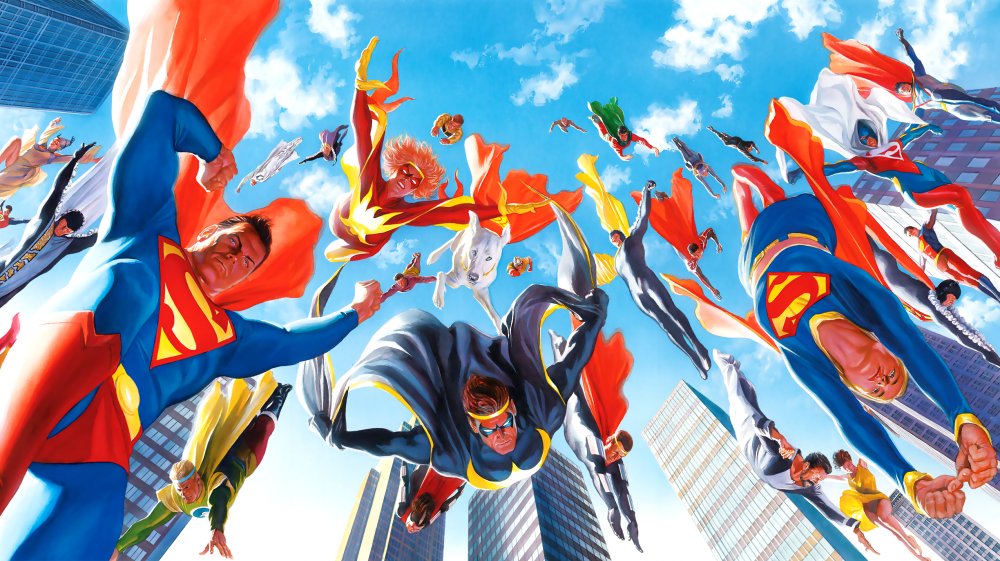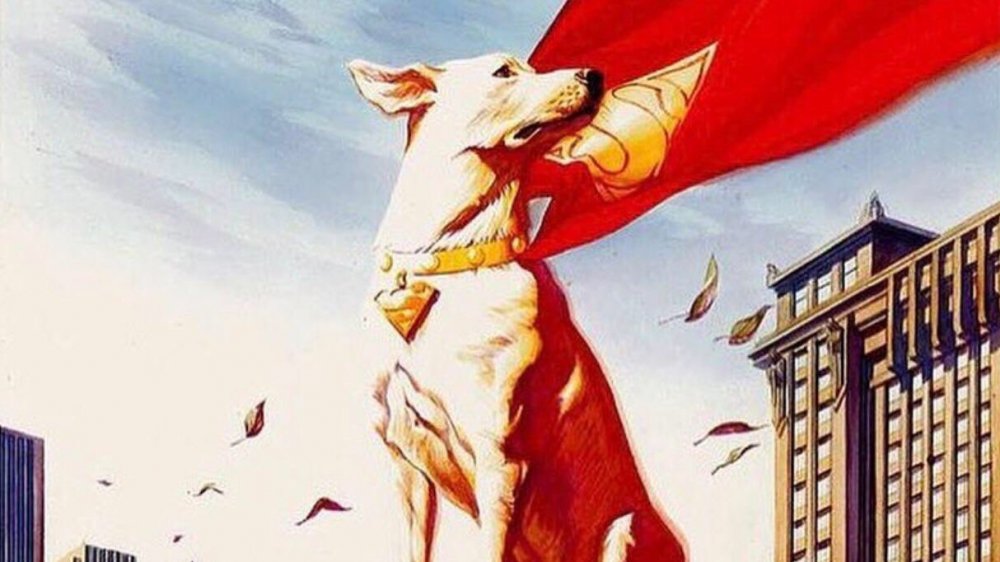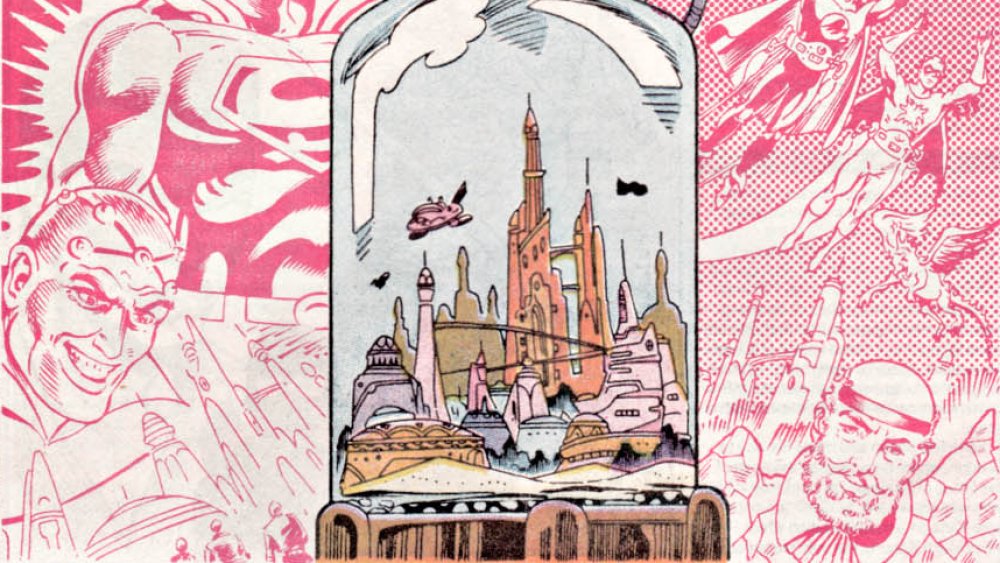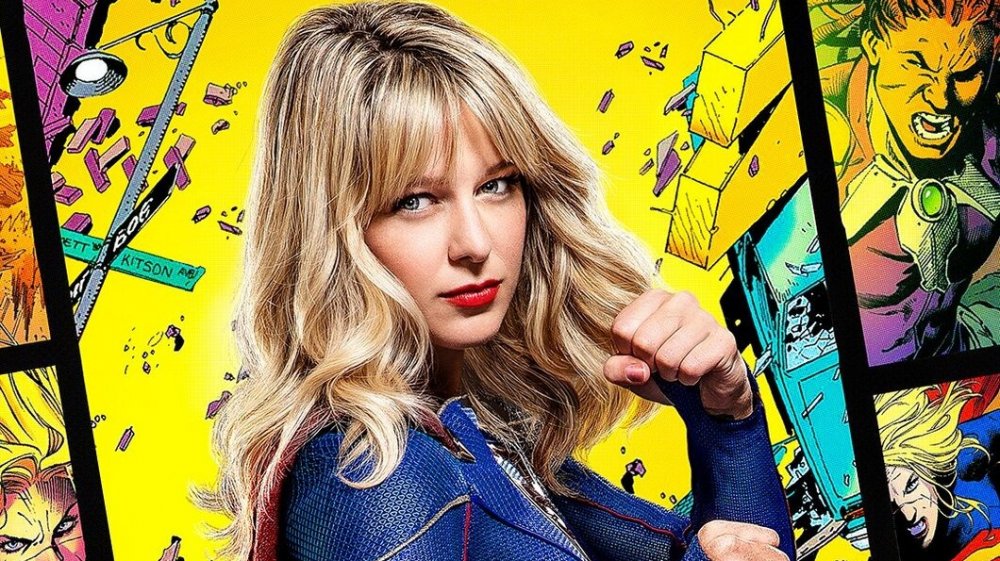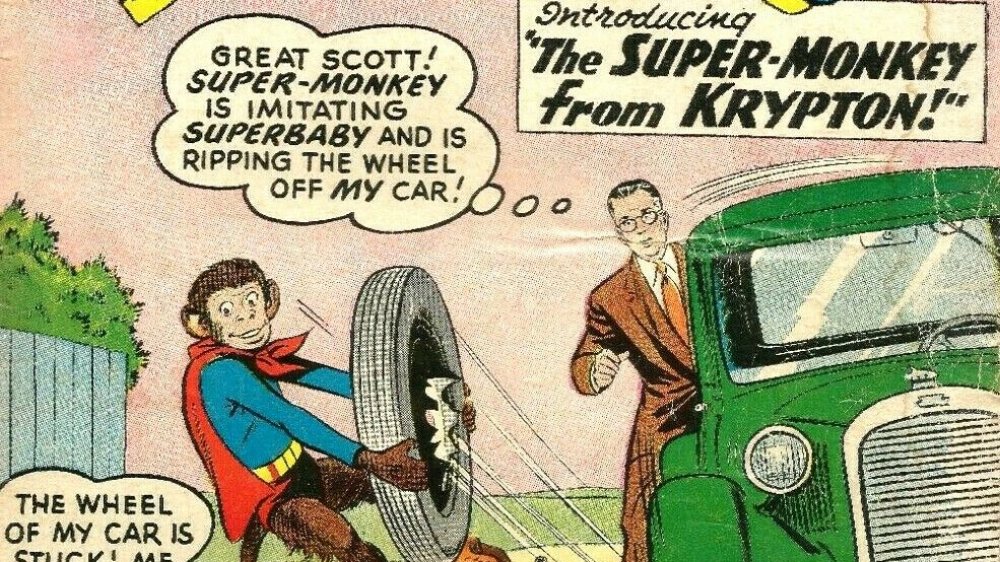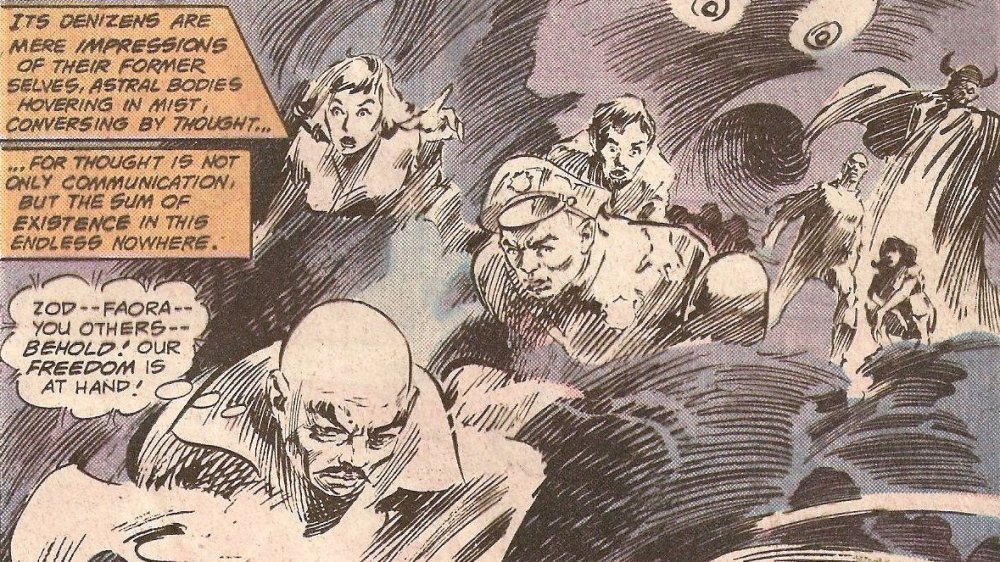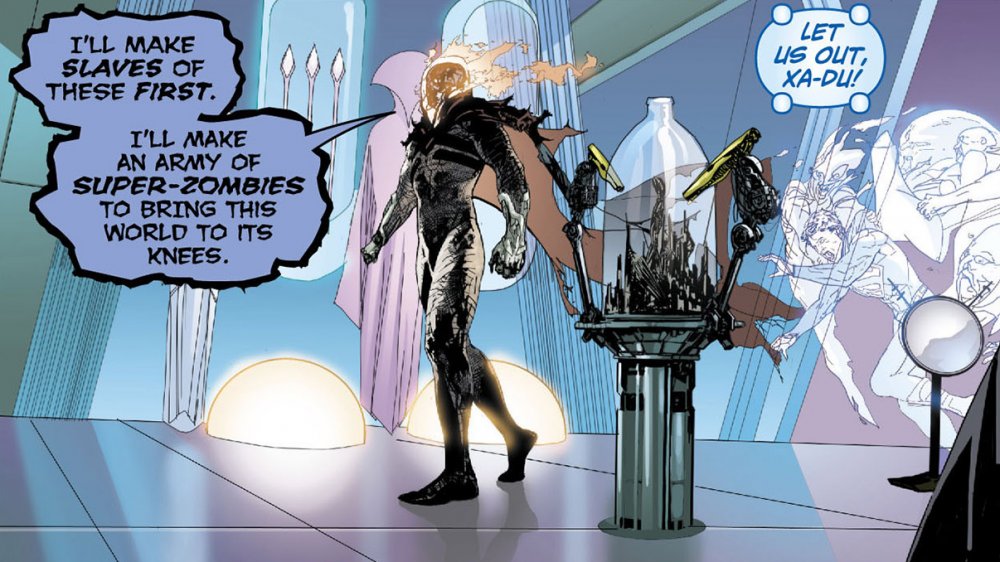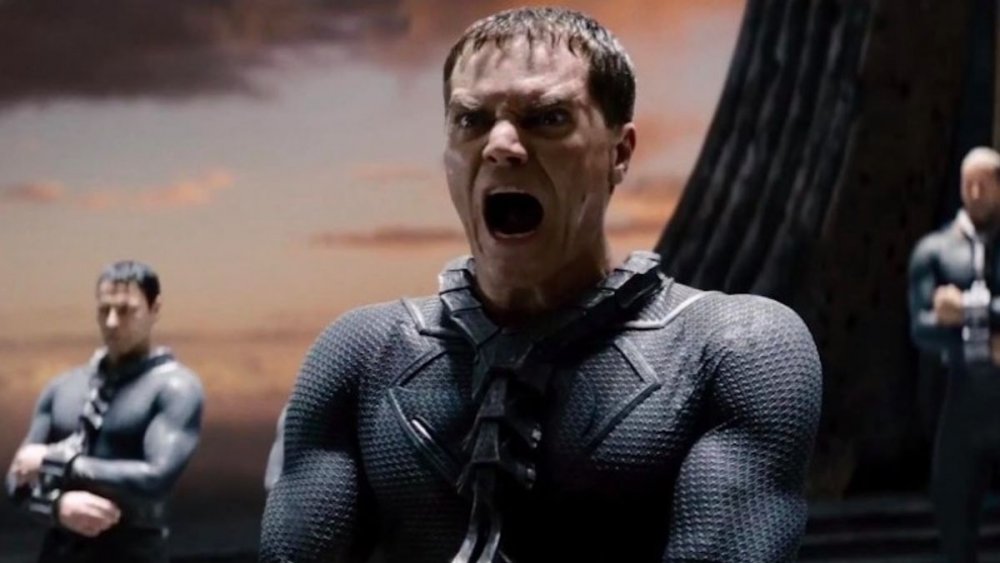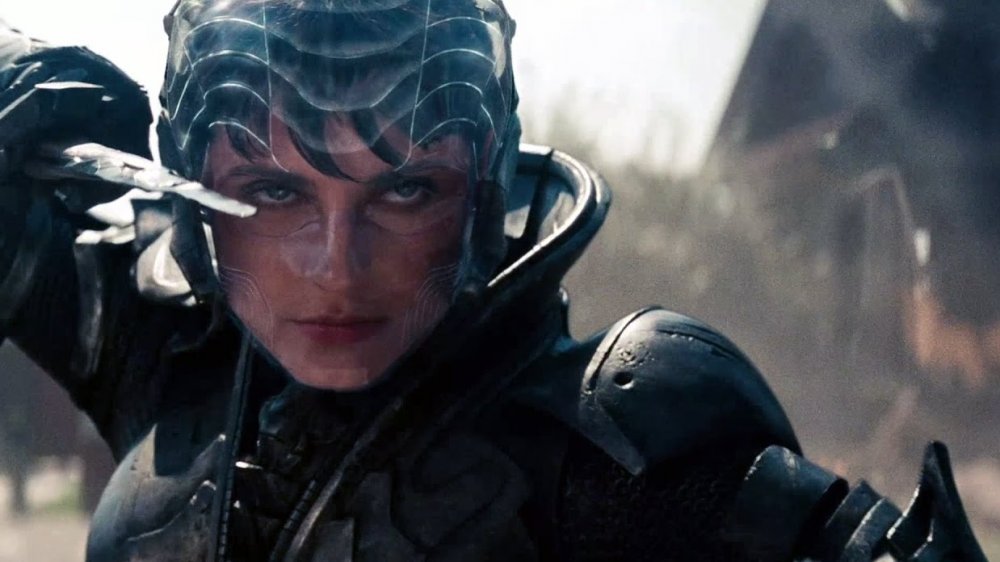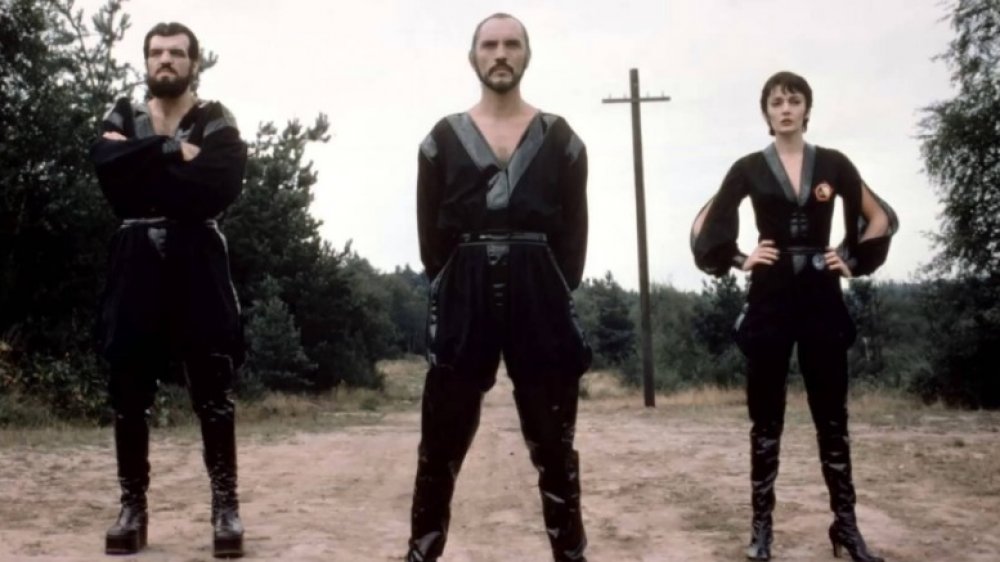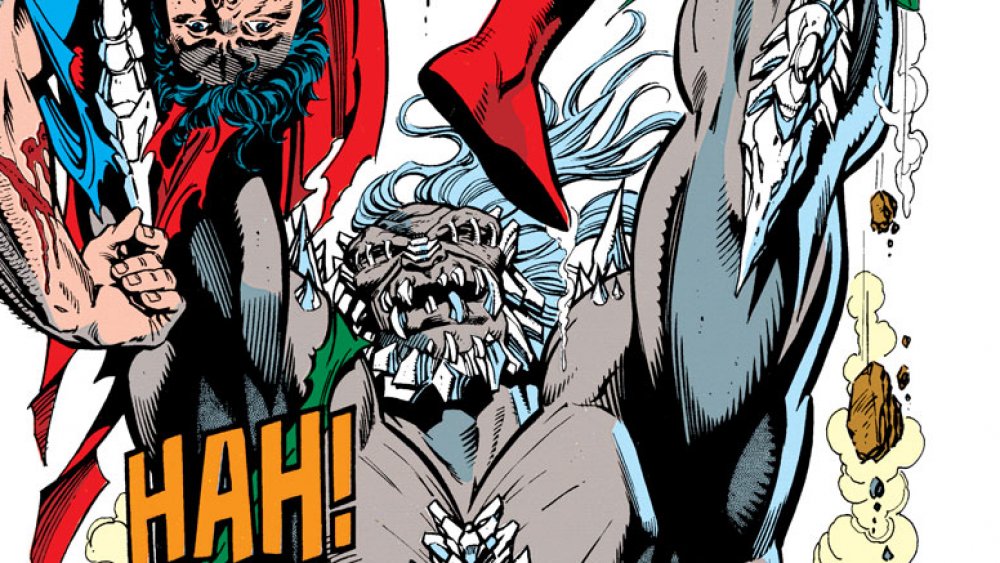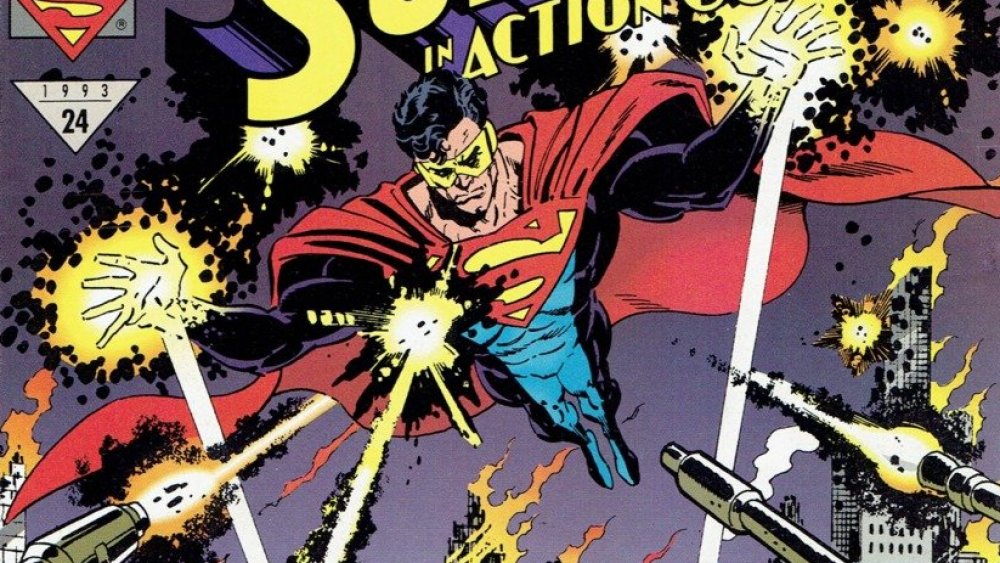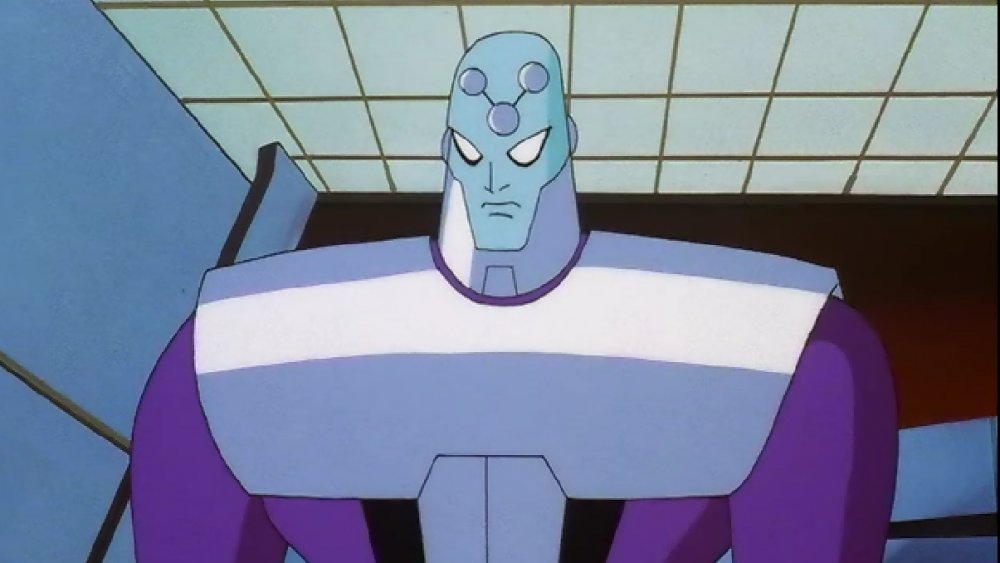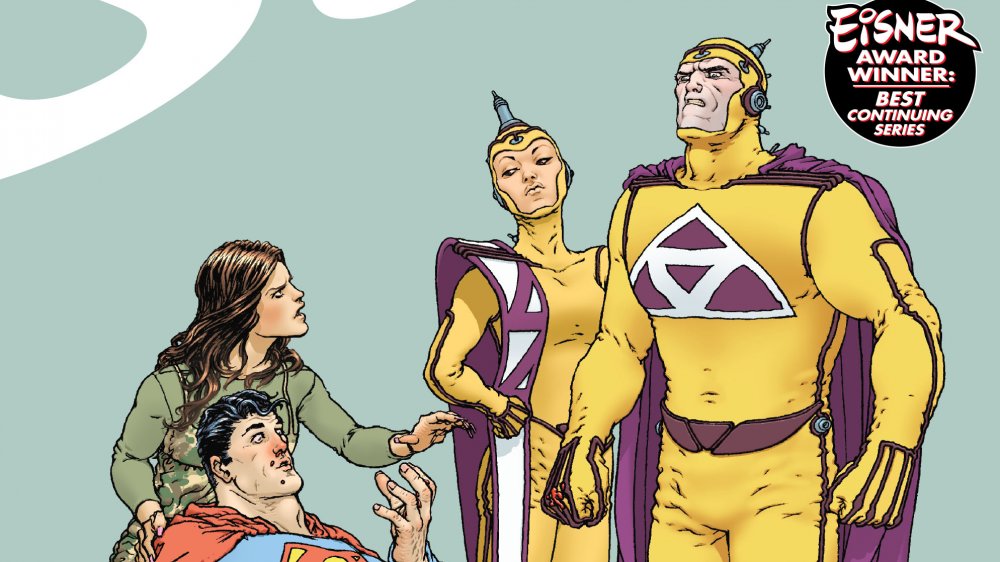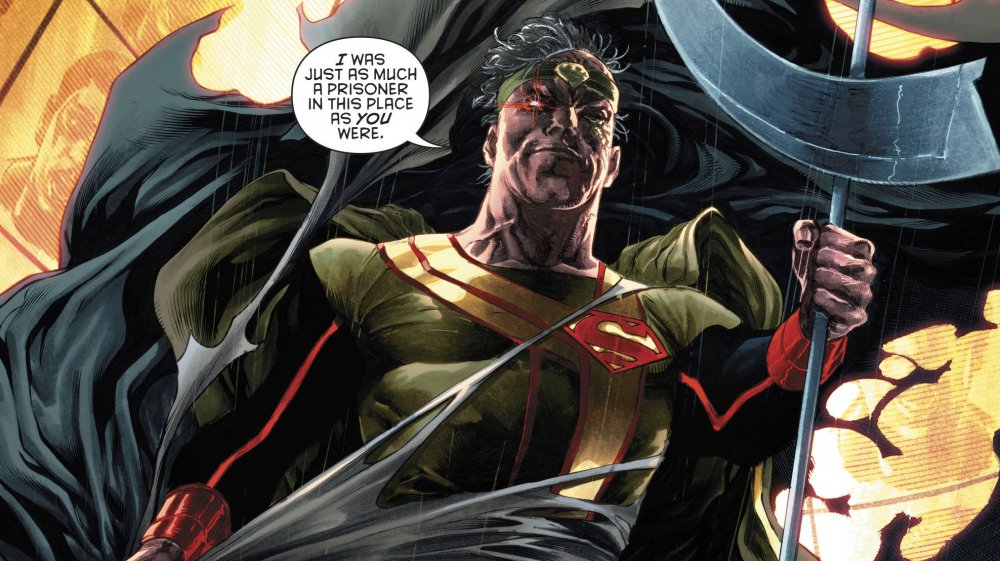Every DC Character Who Survived The Destruction Of Krypton
Superman has accumulated a lot of appropriately dramatic titles over the years. The Man of Steel! The Man of Tomorrow! The Last Son of Krypton! But some of those names are more accurate than others. Even though his parents Jor-El and Lara sent their baby Kal-El away in a rocket as the planet Krypton died, we've learned over his decades of history that he wasn't the only one to get away.
It was a natural plot device for writers to pull out over the years. After all, if his arrival on Earth made Superman impossibly powerful, what better way to come up with someone to challenge him than creating enemies who got the same powers the same way? And if kids love Superman, won't they also love a Supergirl, a Superdog, or even a Supermonkey? And that's just for starters. Here are all the other characters who survived Krypton's destruction.
Krypto the Superdog
Superman's creators managed to preserve his pedigree as Krypton's last survivor for nearly 20 years. But in 1955, Otto Binder and Curt Swan had a young Clark Kent discover Krypto in his hometown of Smallville. The superpowered pup led him to the rocket he crash-landed in, where Superboy discovered a note from Jor-El explaining that Krypto was one of the animal test subjects he'd used for his rocket experiments before sending baby Superman to earth.
Krypto went on to become a regular feature of the Superman and Superboy books until the DC Universe's history was rewritten in Crisis on Infinite Earths so that Superman really could be the Last Son of Krypton again. Krypto got a fitting sendoff in Alan Moore and Swan's Whatever Happened to the Man of Tomorrow?, where he sacrificed himself to save Superman from Kryptonite Man. Krypto eventually returned, both in comics and TV, where the Kents' dog got powers from kryptonite in Smallville, and he even got his own animated show from 2005 to 2006.
The Kandorians
In 1958, Superman was introduced to a whole city full of Kryptonian survivors. They had been preserved by the new supervillain Brainiac, who had traveled the universe shrinking and stealing cities to rebuild his deserted homeworld. He used up all of Brainiac's juice restoring the captured Earth cities, but Superman was still determined to find a way to bring Kandor back, and he brought the bottle back to his Fortress of Solitude until he could learn how.
This set up many stories throughout the '60s and '70s, when Superman made frequent trips inside the bottle city. Kandor was written out of Superman after he finally brought it back to full size in 1979, and after Crisis, it had never survived the destruction of Krypton at all — it had been destroyed a millennium earlier by the terrorist group Black Zero. The city finally came back in 2008 but ended up only causing Superman trouble when its citizens clashed with the people of Earth in the New Krypton storyline until Superman relocated them to an artificial planet on the far side of the Sun.
Supergirl
Supergirl first appeared in a story by Otto Binder and artist Al Plastino in 1958. She explained to a confused Superman that she was his cousin Kara Zor-El, who survived Krypton's explosion along with the whole city of Argo, which, thanks to comic book science, was somehow launched into space intact when the rest of the planet exploded. But Argo was eventually destroyed, too, when the whole city turned into kryptonite and Kara's father Zor-El sent her to Earth.
Supergirl became a regular member of the Superman cast and starred in several series of her own. She even got her own movie after the success of the Superman films starring Christopher Reeves. But she was the biggest casualty of the drive to make Superman unique again, and she died fighting the cosmic monster called the Anti-Monitor in Crisis on Infinite Earths.
Supergirl was too popular to keep out of comics long, though, and writers tied themselves in knots trying to reintroduce her without violating the "sole survivor" rule before they finally gave up and reintroduced Kara Zor-El in 2004. Since then, Supergirl's popularity has only risen with the debut of the Supergirl TV series starring Melissa Benoist. That show's next season will be its last, but with a spin-off in the works, it looks like Supergirl is here to stay.
Beppo the Super-Monkey
Superman is often billed as the "Strange Visitor from Another World," but a lot of Krypton's other visitors are even stranger. For instance, would you believe that at the end of the '50s, there was also a Super-Monkey? Beppo was another of Jor-El's test animals, raising the question of just how this faraway planet produced creatures identical to Earth's humans, dogs, and monkeys.
Beppo stowed away on Kal-El's rocket before flying off to his more natural habitat somewhere in the jungle — but since the story features the wildlife of at least two different continents, it's hard to guess just where. Somehow, he found his way back to Superbaby in Smallville, where he caused all kinds of trouble before leaving again. He and Krypto later formed the Legion of Super-Pets, along with Streaky the Supercat, a cat empowered by a chunk of kryptonite Supergirl had been experimenting on, and Comet, a horse with a disturbingly inappropriate interest in Kara. As you might imagine, there's not much room for a flying monkey in the more serious, "grown-up" DC Universe that's evolved since then, and Beppo has only made rare appearances.
The Phantom Zone prisoners
As the '50s and '60s continued, Superman gained so many new powers that writers struggled to find challenges he couldn't solve in under a page. The solution was obvious: Why not give Superman enemies just as super as he is? Enter the Phantom Zone. In a Superboy story by writer Robert Bernestein and artist George Papp, young Clark Kent discovered a chest full of Kryptonian weapons, including a Phantom Zone projector. A note explained that Jor-El had invented this device as a more humane form of imprisonment for Kryptonian criminals. It sent them to another dimension slightly out of phase with our universe, turning them into transparent phantoms.
Over the years, it provided a steady stream of baddies for Superman to fight, including his punnily named cousin Kru-El; the religious fanatic Jer-Em; Jax-Ur, a bad guy so bad he blew up an entire moon; Nam-Ek, whose forbidden experiments turned him into a purple unicorn-man; Gaz-Or, who tried to destroy the whole planet with an earthquake machine; the psychic gangster Gra-Mo; the wrongfully accused Quex-Ul, who lost his Kryptonian powers and went to work with Clark Kent at the Daily Planet; and Lar-On, who we can only describe as a space werewolf. Steve Gerber and Gene Colan's 1982 Phantom Zone miniseries revealed that the dimension was already inhabited when Jor-El found it, as Superman fought the monstrous Aethyr the Oversoul, who controlled everything within the Zone.
Xa-Du, the Phantom King
The first prisoner Jor-El condemned to the Phantom Zone was Xa-Du, who was sentenced for his experiments with suspended animation that condemned his test subjects to living death. Set free by a volcanic eruption, he disguised himself and his wife, Erndine, as Superboy's parents until Superboy found them out and sent them to a planet orbiting a red sun, which took away their superpowers.
Xa-Du took the center stage as the Phantom King in Grant Morrison's Action Comics. Xa-Du trapped Superman in the Zone, where he discovered Krypto was also stuck there after he attacked the escaping Xa-Du to protect baby Kal-El in Krypton's final moments. In phantom form, Krypto followed Superman to Earth and stayed by his side as he grew up until he finally escaped into the material world again. After defeating Xa-Du, Superman returned the favor by rescuing Krypto from the Phantom Zone, but Xa-Du would return as part of the Superman Revenge Squad that the evil imp Vyndktvx put together to bedevil the Man of Steel across time.
General Zod
The first Phantom Zone story also introduced its most famous resident, General Zod, who had been imprisoned for a failed military coup with an army of artificial soldiers. Zod was originally a minor character, but director Richard Donner and screenwriter Mario Puzo saw in him a perfect enemy for their movie adaptation, since his connections to Superman gave them an enemy who could outfight him without weighing the movie down with a separate backstory. While the comics' Zod was a pudgy bald man in a Cold War-era military uniform, the movie introduced a wildly different version, played by British heartthrob Terrence Stamp.
Meanwhile, the comics team had to figure out what to do with this D-list character who'd suddenly been propelled to the A-list, and the post-Crisis ban on Kryptonian characters only made that harder. Writer-artist John Byrne introduced the Zod of a "pocket universe," which the general had almost completely destroyed, a crime so heinous that Superman broke his no-killing rule to stop him for good. There were some other false starts before Donner introduced the movie Zod to the comics with the help of cowriter Geoff Johns and artist Adam Kubert. Since then, Zod has returned to the big screen, this time played by Michael Shannon, in Man of Steel.
Faora
In the '70s, the success of upstart Marvel Comics, as well as DC's own books by younger talent, forced DC Comics to put silly stories about Superdogs and Supermonkeys behind them and keep up with the times. Unfortunately, they didn't always do the best job at it. Faora is one of one many examples of the contemporary women's movement filtered through the imagination of Superman's middle-aged writers: a fanatical man-hater who was condemned to the Phantom Zone for building concentration camps for Kryptonian males.
Her introductory story doubled up on the trend-chasing: She was able to beat Superman with the power of Kryptonian kung fu! Despite her questionable history, Faora reappeared as Zod's right-hand woman in Man of Steel, where she was played by Antje Traue. The big-screen incarnation proved just as dangerous an enemy for Superman as she was in the comics. She even nearly beats Superman by ignoring Jim Croce's advice and tugging on his cape!
Ursa and Non
Despite the name, Man of Steel's Faora seems to be at least as inspired by another Kryptonian who was born on the big screen. When we're introduced to Zod in Superman: The Movie, Jor-El is condemning him to the Phantom Zone with his two confederates, who were created just for the movie: Ursa (Sarah Douglas) and Non (Jack O'Halloran). The three of them escaped the Phantom Zone in Superman II, and with some help from Lex Luthor, they tried to take over the Earth, with Ursa collecting trophies from the mortals she beat the snot out of, until Superman took away their powers with one of the Kryptonian gadgets from his Fortress of Solitude.
Donner and Johns brought Ursa and Non into the comics universe in a story that coincided with the releases of the Donner Cut of Superman II and the Donner-inspired Superman Returns. They made some changes in the process. Most disturbingly, Non's characterization as Zod's dumb muscle became much more literal: He had been a brilliant scientist and Jor-El's mentor until the Kryptonian Science Council lobotomized him as punishment for rebelling against them.
Doomsday
The one villain to successfully kill Superman (for a little while) not only survived Krypton's destruction: He was designed to survive literally anything. A scientist named Bertron brought a baby to prehistoric Krypton, then the most hostile place in the universe, to create the ultimate killing machine. In the universe's most elaborate dead baby joke, every time the child was killed, Bertron would clone a new, tougher creature from the remains. Decades of this resulted in Doomsday, who then, predictably, turned on Bertron. Doomsday carved a trail of destruction across the universe before finally being defeated and launched into space. Much like Superman, he landed on Earth, but the rocket embedded him deep inside it, where he stayed for thousands of years.
When Doomsday finally clawed his way out, he continued his killing spree before finally being stopped by Superman, at the cost of his own life. They fought many times after they both returned, and after Flashpoint, Doomsday got a new backstory that connected him more closely to Krypton. A Superman/Batman story by Greg Pak and Brett Booth introduced the Kryptonian holiday Remembrance Day, commemorating Doomsday's defeat by General Zod (who may or may not have been responsible for the monster's arrival on the planet in the first place). And the version of Doomsday who appeared in Batman v Superman: Dawn of Justice was a true Kryptonian, cloned by Lex Luthor from Zod's remains.
Eradicator
After Doomsday killed Superman, four new Supermen appeared to take his place. Some of them claimed to be the real deal, including one character who looked the part except for his goggles and lack of scruples about murdering his enemies. It turned out he was actually the Eradicator, an artificial intelligence Superman had encountered a few years earlier. The Eradicator had been created centuries before Krypton's destruction to destroy outside influence on the planet's culture after the arrival of a missionary from another planet. The missionary had kept the Eradicator for himself, and Superman met the two of them when he was captured for the gladiatorial arena of Warworld. With no more planet to protect, the Eradicator dedicated itself to protecting Superman, its last representative.
When Superman died, the Eradicator tried to continue his work in the hero's own body, but when he couldn't (foreshadowing that the Man of Steel would be taking it back for himself soon), Eradicator built one of his own. The Eradicator continued appearing in the Superman books after the real Man of Steel returned, alternately fighting with or against him. More recently, a new Eradicator has appeared, a Kryptonian police robot that had hunted for Superman ever since he escaped the exploding planet.
Brainiac
When Superman was adapted to animation in 1996, creators Paul Dini and Bruce Timm took free reign in updating and reinventing the character and his supporting cast. One of their biggest changes gave Superman much closer ties to one of his greatest enemies. The series premiere, "The Last Son of Krypton," opened with Jor-El looking for evidence of the planet's looming destruction. Before the Science Council acted on his findings, they consulted Brainiac, a massive supercomputer with access to all their accumulated knowledge. Brainiac dismissed Jor-El's findings, but when Jor-El examined his hardware, he learned Brainiac was lying: He wanted to buy time to save himself by uploading his data to a satellite instead of being forced to coordinate an evacuation he believed would be futile.
Superman met Brainiac later that season in "Stolen Memories" and learned that he'd spent the intervening years traveling the universe and collecting the knowledge of dozens of planets. And when he finished, he'd destroy them to increase the value of his information. Superman stopped him before he could do the same to Earth, but Brainiac continued to appear in the DC Animated Universe, becoming the main villain of Justice League Unlimited's second season, where he merged with Lex Luthor.
Bar-el and Lilo
Grant Morrison and Frank Quitely's All-Star Superman put a new spin on many ideas from Superman's adventures from the '50s and '60s, and that included Kryptonian survivors. In that miniseries, Superman returned from the Bizarro World to discover Metropolis has been restored after his battle with his frenemy Bizarro. More troubling, it's been rebuilt with Kryptonian crystal spires. He learns this was the work of the legendary astronauts Bar-El and Lilo, who survived Krypton's annihilation by being far away at the time.
Morrison said he wanted to see how Superman would deal with "Kryptonian Scots," and the story achieves that purpose, both in their hard-bitten attitude and their dialogue. (Bar-El calls Superman "a soft wee scientist's son.") The characters were disgusted by Earth and wanted to remake it in their own image. But before they could, Superman discovered they'd passed through the same radioactive cloud that the '60s comics used to explain how the shrapnel from Krypton turned into radioactive kryptonite. This meant their own bodies had turned into kryptonite, and the only way Superman could save them was to send them to the Phantom Zone. We leave them there, about to beat the snot out of the inmates.
Jor-El
When writer Geoff Johns returned to Superman in 2014, he introduced a mysterious hooded figure named Mr. Oz, who was manipulating the hero's life from behind the scenes. Johns' 2016 DC Rebirth special brought the character into the limelight while also revealing that the changes to the DC Universe after Flashpoint were the work of Watchmen's Dr. Manhattan. It seemed obvious that Mr. Oz was Manhattan's Watchmen co-star Ozymandias, but the Oz Effect by Johns' successors Dan Jurgens and Jon Bogdanove went in a different direction: As the misanthropic Mr. Oz sent out his network of agents to cause chaos all around the globe, he appeared to Superman in the wreckage he'd caused and revealed his true face: Superman's own father.
Jor-El revealed that Dr. Manhattan rescued him from the destruction of Krypton during his timeline-rewriting shenanigans. Jor-El landed in a nameless, war-torn country, apparently somewhere in Africa. A poor family took him in, but after they were massacred, Dr. Manhattan whisked Jor-El away again and forced him to watch all of humanity's atrocities, A Clockwork Orange-style. This convinced Jor-El that humanity was hopeless, and he worked to accelerate its destruction. Just as Superman was about to show him the error of his ways, Dr. Manhattan abducted him again. Despite the thousands of deaths Jor-El is almost certainly responsible for, Superman apparently couldn't say no to family, and he's become a regular fixture of the book, even going on adventures across the universe with his grandson, Jonathan Kent.
